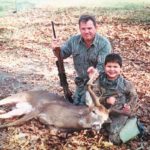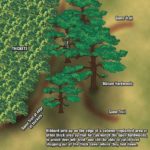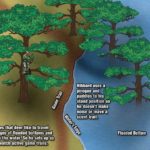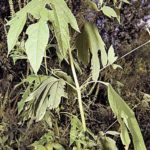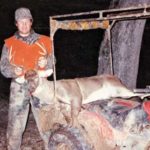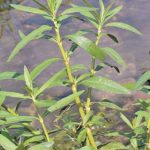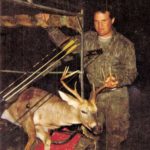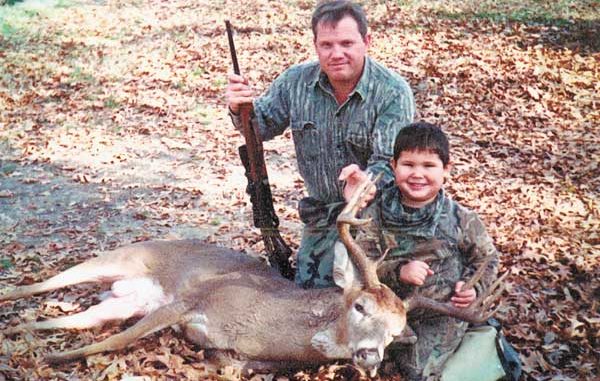
There are many quality public lands available to deer hunters, but those looking for the best opportunity to fill their freezers might want to make a trip to Ouachita WMA.
Troy Hibbard desired to be duck hunting the morning of Dec. 20, 1997, but he couldn’t put incredible deer sign he had found on the edge of Ouachita Wildlife Management Area out of his mind.
“I wanted to go duck hunting so bad, and a buddy wanted me to go,” the Sterlington hunter said. “But I told him I had to go hunt this buck.
“There was a scrape as big as the hood of my truck.”
The scrape was just outside a replanted area on the northern end of the WMA, so Hibbard eased into a tree just on the adjacent Russell Sage WMA just before dawn.
As sunlight filtered through the trees, movement caught Hibbard’s eye. A buck was under the hardwoods.
“He was out there feeding on acorns,” he said. “All he had to do was go 50 yards, and he’d be back in the thickets on Ouachita.”
As the buck began picking his way to a game trail leading into Ouachita, Hibbard put his crosshairs on the buck, and dropped him. The 10-point later scored 131 points.
“I was in a brush blind hunting ducks by 7:30,” Hibbard laughed.
The following year, on the same day, the hunter climbed into the same tree and watched a big-racked buck walk out of the same thicket.
“He was on the same trail as that big 10-point,” he said. “I don’t know what he was doing coming out at daylight. He should have been going back in there to bed down.”
A shot added that 10-pointer, which scored 162, to Hibbard’s list of accomplishments.
The deer are just two of those Hibbard has killed during 35 years hunting Ouachita WMA.
“In the 1970s, I went to Ouachita when it was a hunting club,” he said.
The hunter, who worked on the property five years for the Department of Wildlife & Fisheries, said the public land is all he needs to fill his freezer each year.
“I’ve never been in a club in my life,” Hibbard said. “As long as I can get my three, four, five deer a year, then why do I have to join a hunting club?”
The property has grown since the first tract was purchased in 1973, with old agricultural land providing the opportunity to grow perfect whitetail habitat.
“There are several areas that were replanted, and those seedlings are 25 years old now,” DWF biologist Charlie Booth said. “It’s real thick understory.
“That’s the kicker at Ouachita.”
The result is a healthy population of deer, and hunting success is fantastic: Hunters in the 2007-08 season had to invest 4.4 efforts for each of the 355 deer killed during the managed hunt on the property.
However, Booth said few of the deer killed are older than about 2½ years.
“You don’t kill a lot of what you’d call wall-hanger bucks,” he said. “You just don’t see many deer getting the age on them.”
That doesn’t mean there aren’t some quality deer on the property, Hibbard said.
“If I ain’t killing a big one, usually every year you hear somebody has killed a big buck,” he said.
The property simply lends itself to deer, Hibbard said.
“I like the way it’s laid out,” he said. “In the mid ‘80s, I was hunting big woods and fields growing up, but once they started doing all that (tree) planting, the deer just love to get in there.”
The key is to focus on food, unless bucks are running does.
“For a lot of people, if they would outlaw corn, there would be no deer killed,” Hibbard said. “I’ve never killed a deer over corn.”
Instead, he focuses on food sources.
In the early season, that means locust beans and persimmons.
“There’s a lot of those trees on the ditch banks,” Hibbard said.
As the bean and persimmon crops dry up, he moves to browse. But by the time November rolls around, Hibbard begins focusing on mast.
“I start looking for acorns,” he said. “They love striped oak acorns and pin oaks.
“Sometimes you can look under trees, and there’s crap everywhere.”
Deer begin scraping by mid November, and Hibbard said that goes on for several weeks.
“I’m finding rutting in November and even in December,” he said.
Although he pays close attention to early signs of rutting, it’s the December scraping that excites him.
“If you start finding scrapes in December, you better get on it,” Hibbard said.
